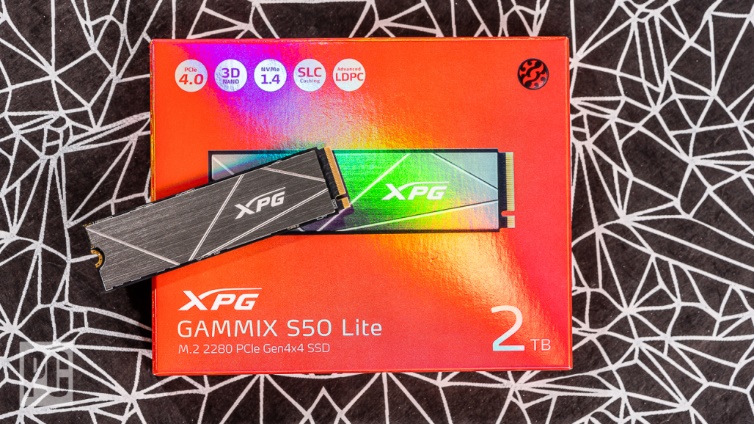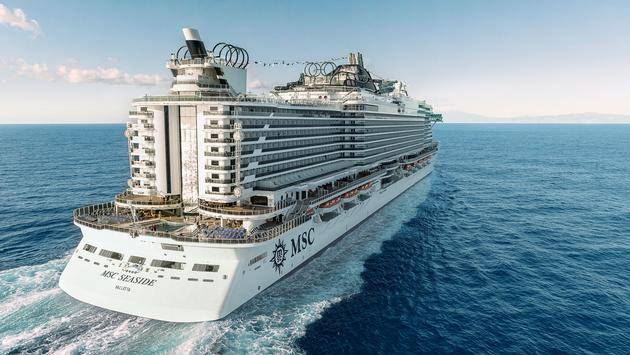The Best Cheap SSDs for 2021

Still booting from a hard drive? These budget-minded solid-state drives will give your poky PC a big speed boost. We've tested dozens; these are the best.
Today, you'd be forgiven for thinking that "SSD" stood for "seriously speedy drive." Indeed, we'd lobby for that change.
Why? Over the last five years, solid-state drives (SSDs) have changed their shapes, speeds, and storage stripes with such agility that now, they are the biggest real-world difference-makers when it comes to computer upgrades. More than any other kind of core component, you can feel the presence of an SSD.
A dozen-plus makers are churning out SSDs for the U.S. market, among them storage heavyweights Samsung, Micron, Seagate, and Western Digital. And over the past decade, SSDs have morphed from exorbitantly priced luxury items into commodities whose quality is almost uniformly high. An example? A 32GB SSD we tested in 2008 sold then for a whopping $800, which is $600 to $700 more than a modern one that packs 60 times the data. Plus, even today's humblest new SSDs are about five times faster than that '08 model.
But interface and manufacturing advances aren't the only forces at work these days. Other factors, such as NAND manufacturing efficiencies, have caused prices per gigabyte to fall lower than ever. Oversupply has been a factor in recent years, too.
Matters have stabilized somewhat in 2021, but no doubt: buy SSD uk pricing has shifted into a buyer's market. Parts of the price spectrum that were previously reserved for lesser-known budget brands have been penetrated by larger players such as ADATA, Samsung, and Western Digital. Indeed, every launch is something of a street-pricing war among some of the biggest players in the game.
On the whole, changes in how SSDs are made are likely to turn this into a permanent condition. The industry is moving away from 32-layer and 64-layer NAND manufacturing into 96- and 128-layer production processes, with 176-layer waiting just over the horizon. These higher-numbered process technologies, among other efficiencies, allow companies to fit more storage in a smaller space, decreasing the cost of materials and passing on savings to consumers.
In other words, SSD performance and capacity have rocketed, while relative prices have plummeted. That makes an SSD the best bang-for-the-buck upgrade any upgrade-eligible user can make. The only downside to this explosion of SSDs: The number of choices, especially among budget models, can be overwhelming.
Buying Basics: Budget SSDs
Are you a buyer with basic needs, looking to upgrade a traditional platter hard drive in a laptop or desktop with something faster? It's a safe strategy, these days, to check pricing on recent SSD models and pick the most affordable drive with the capacity you need, from a name-brand maker you are willing to trust with your data. Simple as that. Disappointment will be rare, assuming you are going from one SATA drive to another. (Also, see our primer SSD Versus HDD: What's the Difference?)
If you want to go deeper, though, to make sure you're getting the fastest, potentially longest-lasting drive for your budget dollar, we'll detail many of these considerations below, to help you make the smartest choice. (The first item below is essential, regardless.)
What Form Factor of SSD Should I Get?
SSDs are no longer only traditional 2.5-inch drives, the same size and shape as the 2.5-inch hard drives found in many mainstream laptops. These drives are still common, but SSDs have been changing shape in recent years.
If you have a recent slim laptop or 2-in-1, it probably requires a gumstick-shaped M.2 drive (that is, if you can upgrade the drive in the laptop at all). For deep details about those drives and the best models we've tested, check out our "alternate" SSD buying guide, The Best M.2 Solid-State Drives, for a great deal of background and advice on this newer kind of SSD.
Note that the last few generations of desktop PCs and their motherboards usually have a slot or slots for M.2 drives, as well. M.2 is not only a laptop thing. We have included in our product picks here some of our favorite budget-minded M.2 SSDs to give some "quick pick" guidance for this kind of drive. But M.2 drives have a lot of subtleties around them, so if you're not up to speed, hit the link above for a lot more on M.2.
For example, just because your laptop or desktop may have an M.2 slot doesn't meant that a given M.2 drive will work in that slot. You have make sure that the host system will accept a drive of that physical size (M.2 drives come in different lengths, and even thicknesses) and that the bus type (Serial ATA versus PCI Express) of the SSD is supported by the system slot into which you're installing it. Furthermore, different systems support different generations of PCI Express (PCIe 3.0 versus PCIe 4.0), and that can have an effect on the peak speeds you'll see. Again, hit the link above for much more detail.
MLC, TLC, and QLC Memory: What's the Difference?
The biggest technical consideration that shoppers will face when opting for a budget SSD is what type of solid-state memory it uses. If you're not familiar with the terms "MLC," "TLC," and "QLC," you can get up to speed with our primer Buying a Solid-State Drive: 20 Terms You Need To Know. But we'll give you the short version here.
The first letter in both flash types refers to the number of bits each memory cell on the drive can store. The "M" in MLC stands for "multi," meaning (in this case) that the memory can host two bits per cell. The "T" in TLC stands for "triple," or three bits per cell, and the "Q" is "quad"/four bits per cell. In a drive with many millions of cells, having an extra bit in each cell to store stuff adds up quickly, allowing TLC or QLC drives (in the simplest sense) to hold more data than MLC drives using the same amount of silicon. This also lowers production costs, since fewer physical modules are needed to store the same amount of data.
Though TLC tech was originally much slower—specifically, when writing data to the SSD—and considered a less reliable option than MLC if deployed in heavy write scenarios, those concerns have waned over time, in ways we'll touch on below. TLC drives are now the mainstream choice for general computing use. Plus, the emergence of "3D" versions of TLC NANDs (the chips upon which SSDs are built) has allowed SSD makers to deliver more capacity in less space by building memory modules in a vertical as well as horizontal ("planar") manner.
Because TLC module manufacturing reduces overall costs, and TLC provides decent performance, most manufacturers have jumped aboard the TLC NAND bandwagon, making this type of SSD the de facto kind for those looking for a low-cost SSD. And for most users, TLC drives' performance is perfectly acceptable. MLC is not a factor in cheap or even mainstream SSDs these days.
We mentioned above that TLC-memory-based SSDs can suffer from slower write speeds compared to MLC SSDs. The basic reason is that TLC flash (and likewise, the newer QLC) simply has more bits to deal with on a per-cell level. Manufacturers have been able sidestep this limitation, however, with clever caching technology that basically treats a portion of the drive as if it were a much faster type of flash memory (SLC, or "single-layer cell"). Under this approach, write operations are initially cached to this speedier buffer. Then, when the system is idle, the buffer transfers the data to the slower NAND.
The limitation of this approach is that the buffer is small (usually between 6GB and 10GB), as it has to be small enough to not reduce overall drive capacity by much, or increase costs. So, on TLC or QLC drives, if you try to copy a chunk of data that is larger than the buffer, you may see a big temporary drop-off in write performance.
Most mainstream users won't do this kind of thing often, so it's not really a problem. But be mindful of this issue when considering a TLC or QLC drive, particularly if you're a content creator or other power user who deals with massive files, or if you move big hunks of data on and off your drive all the time. For these specific situations, it could be worth paying extra for a costlier MLC drive.
How to Understand SSD Longevity
The other knock against TLC and QLC NAND flash is that it generally has a shorter lifespan than more traditional MLC-based flash memory. This is a trait backed up by SSD makers' own specifications, not just conjecture. The relevant spec is the terabytes written, or TBW, rating, expressed as the total number of terabytes the drive should be able to write over its lifetime before the drive electronics have to start decommissioning cells. The TBW rating also correlates to the warranty that a manufacturer offers, but we'll get into that a bit more in another section below.
Every time your PC triggers a new write operation for a memory cell that already contains data, that data must be erased first; only then can new data be written to the cell. Because this erase/write process slows down overall operation, the SSD controller strives to write to "fresh" cells (that is, ones that don't need pre-erasing) when it can. But at some point, it has to start erasing previously used cells and writing to them.
An SSD can repeat this routine of erasing, then writing to, a cell only so many times before a given cell weakens and no longer can hold data. In MLC drives, a typical cell can take roughly 5,000 write/erase cycles before it's likely no longer functional. On a TLC drive, this falls to around 1,000 cycles. This seems like a dramatic difference between the two memory types, but this problem is mitigated by a process called "over-provisioning." In it, a chunk of the drive is kept hidden and unused, only to be brought online when other cells begin to wear out.
In the real world, tech professionals and consumers will seldom be in danger of writing a drive to death, unless they were using it to run a server, or some other task where the system is powered up and being accessed almost constantly. In fact, a while back The Tech Report ran a long-term experiment, writing to a batch of SSDs until they died to see how long they would last. Samsung's TLC-based SSD 840 drive wrote over 800 terabytes before giving up the digital ghost. In the real world, it would take the average user many years (more likely a decade) to write that much data to an SSD. So, unless you plan on using your SSD as your primary drive for 10 years or more (which would make little sense, given how much cheaper and better SSDs get every year), drive endurance is only a secondary issue.
Still, that shouldn't be used an excuse not to back up your important data. SSDs are not spinning hard drives, but any SSD can still fail randomly due to a defect, a power surge, or some other unforeseen event. You may be able to get a drive replaced if it's under warranty, but the new drive that gets mailed to you won't have your old data on it, of course.
Evaluating an SSD's Supporting Software
Though many seasoned enthusiasts and SSD vets don't find bundled storage software or utilities a necessity, some manufacturers offer a software package with their SSDs that can be surprisingly useful. Samsung and Intel kicked off this trend years ago by pairing their drives with robust utilities that let you examine every facet of the drive, including its overall health level, the amount of data written to it, and whether or not your system is set up to extract maximum performance from the SSD. The software sophistication has grown from there.
The usefulness of these free tools can vary, from slick and feature-rich, to garish and only marginally useful. Some drives include a simple utility that just lets you update the drive's firmware, and little or nothing else. Generally, a firmware update shouldn't be necessary unless there's a problem with performance.
Our advice, if you're the type to tinker, is to purchase a drive that includes robust utility software, but read up on the included software first. To our eyes, Samsung provides among the best software packages with its drives, though Crucial/Micron, SanDisk/Western Digital, and ADATA/XPG are all good bets on the software front, too.
Likewise, you may want to look for a drive that includes a drive-cloning utility (such as a version of Acronis TrueImage) if you're upgrading from a drive in an existing PC, rather than installing a new OS from scratch. The lowest-priced drives lack these niceties, but free programs can get the job done, too. We've had luck using the free Home version of EaseUS's Disk Copy.
What's a Good SSD Warranty?
Check the warranty terms before purchase. Many budget SSDs we've tested feature a three-year warranty, rather than the longer plans of pricier premium models. Samsung, with its watershed SSD 850 EVO model, was an early leader in setting the warranty bar higher for budget-minded SSDs, opting for a five-year plan. Samsung was able to make advancements with its TLC flash, combining it with the company's vertically stacked V-NAND, to make drives that are low in cost but similar in endurance to pricier MLC drives. Consider a five-year coverage plan a gold star for any budget SSD, though a lot of drives still settle at three years, or when you reach the TBW limit of the drive, whichever happens first.
The Key Metric: Evaluating Cost per Gigabyte
Without doing a little math, it's tricky to figure the bottom-line cost of one SSD versus another when capacities vary, or when you're looking at SSDs on sale versus regular price. The four main capacity classes you will see, from drive to drive, are:
120GB or 128GB
240GB, 250GB, or 256GB
480GB, 500GB, or 512GB
960GB or 1TB
SSDs bigger than 1TB aren't "budget" drives these days, with 2TB models starting at around $200. But they'll get there. It's fine, as a rough measure, to compare prices from drive to drive within the same capacity class.
However, the best way to judge what you are paying, at a more precise level, is to divide the price by the number of gigabytes in the SSD. So, for example, a $50 240GB drive yields a cost per gigabyte of 20.8 cents. A $50 256GB drive, in contrast, comes in at 19.5 cents per gig. The least-expensive budget drives you'll see these days hover around 10 cents per gigabyte. Use this math to calculate your bottom-line price when comparing a host of drives.
So, Which Cheap SSD Should I Buy?
So, onward to our top drive picks. We've chosen our favorite tested 2.5-inch Serial ATA SSDs and PCI Express M.2 drives alike; the system you are upgrading will dictate what you can actually install.
Important to note: All of these drives are also available in capacities different than the ones we tested, so dig into each review for the details on alternate capacities, if you want a drive that's bigger or smaller than what you see below. For more storage picks, you can also check out our roundups of the best external SSDs and the best SSDs for upgrading your laptop, as well as the best external hard drives.













